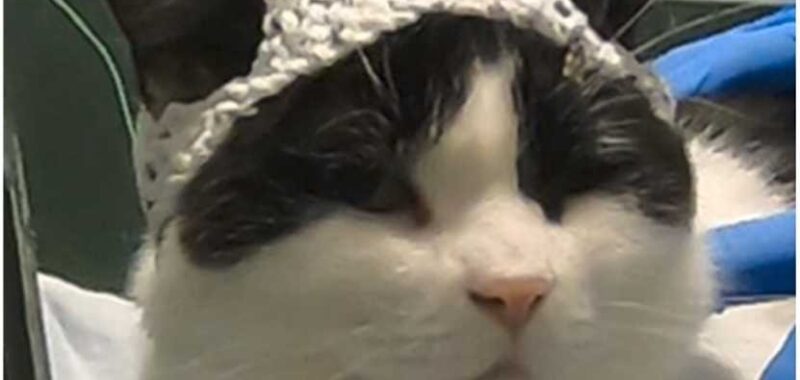Scientists may have found a way to measure real-time electrical activity in cats’ brains for the first time — using tiny crocheted hats fitted with gold-plated electrodes.
While a wool cap with small slots for pointy ears isn’t necessarily revolutionary, understanding what goes on behind those mysterious, beady eyes has long been a struggle for researchers due to cats’ notorious lack of compliance. “Even if we used anatomical markers (muzzle, ears and inion), it was difficult to always keep the electrodes at the exact same place,” the scientists write in a study published in the November 2024 issue of the Journal of Neuroscience Methods.
The team of researchers found that these electrode-stuffed tiny hats were “well-tolerated” by 10 of the 11 feline test subjects. “Most cats remained calm with minimal restraint but some individuals required a second hand to be placed on the chest to discourage them from moving forward,” the paper reads. “The knitted hat helped to keep the electrodes in place during the evaluation and prevented cats to try to play with or chew the wire.”
“One cat seemed to fall asleep during the procedure,” the scientists add.
Captured in photos documenting the study’s procedure, these cats in woolen caps would fit in well with the unwilling subjects featured in the subreddit r/CatsInHats.

Beyond looking cute, these researchers hope putting these hats on cats could help treat chronic pain in felines. In particular, measurements of pain levels and other brain activity could help inform targeted treatments for osteoarthritis, which afflicts 25.6% of the species’s adult population, according to the study’s introduction. The condition, as in humans, causes excruciating chronic pain and degeneration of the body’s cartilage. Available treatment options for cats are extremely limited, and most pain medications pose severe side effects.
For this study, scientists used the hats to measure whether various stimuli, including grapefruit aroma and green light exposure, could affect a cat’s pain level.
While the study did not conclusively prove whether such interventions reduced the cats’ pain, the fact that cats are able to tolerate this form of non-invasive brain tracking while awake is itself a new finding, as previous tests were exclusively performed on sleeping cats. These hats will thus enable scientists to measure and observe real-time reactions to immediate stimuli, opening up new avenues of research.
And don’t worry — these hats don’t hurt the cats. “The entire procedure lasted around 45 min per cat,” the scientists wrote in their description of the procedure, “including positive reinforcement (treats and petting) between the sensory exposure.”

